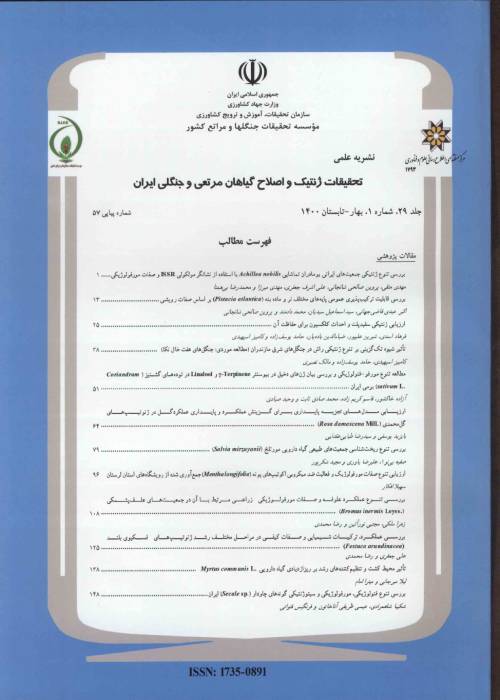Study of some Artemisia L. species based on ecological, micro-morphological, and molecular evidence in rangelands of Golestan province, Iran
A study of indicator species to manage rangeland ecosystems and preserve the vegetation of natural areas in dry regions is necessary. The knowledge of the ecological requirements of the range species is important for planning and managing plant communities and protecting and exploiting their ecosystems. Golestan province, with its particular geographical position, is the habitat of many plant species. By identifying the factors affecting the growth and adaptation of these species, it is possible to avoid spending money and wasting time planning to improve and restore pastures. One of the valuable genera that grow in rangelands is Artemisia L., which is distributed in arid and semi-arid regions of the country and plays an essential role in soil protection, fodder supply for livestock and medicinal value.
In this study, 12 populations of four species of the genus Artemisia in the rangeland area in the north of Gonbad Kavos in Golestan province, Iran, were studied based on ecological, micro-morphological, and molecular evidence. The ecological studies were carried out using climate data and soil characteristics of the species' habitat. Also, the morphology of the species' pollen grain was investigated using a scanning electron microscope (SEM). The molecular relationships of four species (A. annua, A. sieberi, A. aucheri, and A. fragrans) were investigated using nuclear nrDNA ITS and chloroplast rpl32-trnL(UAG) sequences and their combinations.
The results of the ecological studies showed that many of the Artemisia species were grown in dry climates and in silty and silty loam soils. EC measurements indicated that the soils of area were saline and had poor organic matter. According to the results, many pollen grains of the species were medium-sized and tricolporate. In all studied species, according to the P/E ratio, the outline of the pollen grains, those seen in the polar view were circular, triangular, and equatorial with an elliptical outline and their exine decorations were echinate. The results of molecular studies indicated that all the species formed a monophyletic group with high support (PP=1.00, ML BS=100, MP BS=100). The combined analysis of data showed more supported relationships than the analyses of a part. The results of the cluster tree showed two separate clades. The annual species A. annua was placed in clade 1 and the rest of the studied species with high support (PP=0.88, ML BS=90, MP BS=94) were placed in clude 2.
The results of current research showed that the ecological, micro-morphological characteristics and molecular data were useful in the distinction between the Artemisia species. Such a study allows us to select suitable and adapted genes for the environment and transfer them to the crop species to produce stress-tolerant cultivars. Artemisia is widely distributed in Iran due to its ecological adaptation and high adaptation intensity in natural conditions. Unfortunately, the change in land use and the transformation of natural areas into agricultural lands have caused to shrink the steppic areas and led to limitation of the species formation and diversity. Examining the kinship relationships between species and the evolution of traits can be used to determine the probability of success in interspecies crosses. Therefore, the obtained information can help maintain and balance the Artemisia habitat.
- حق عضویت دریافتی صرف حمایت از نشریات عضو و نگهداری، تکمیل و توسعه مگیران میشود.
- پرداخت حق اشتراک و دانلود مقالات اجازه بازنشر آن در سایر رسانههای چاپی و دیجیتال را به کاربر نمیدهد.


